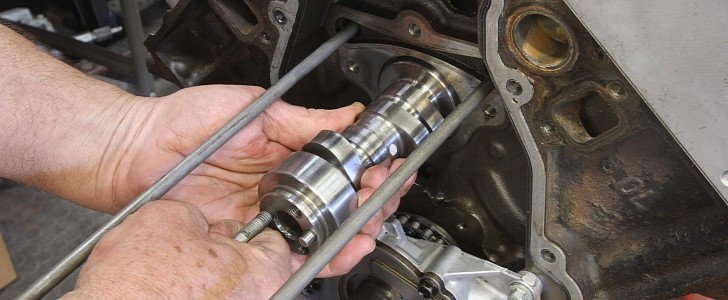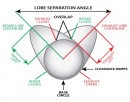Every four-stroke engine has at least two valves per cylinder, so its time you make those valves do your bidding. A new camshaft will unlock power you never thought possible, so let’s learn the basics in order to make an informed decision.
It all began with my '87 Camaro. The tired 5.0-liter V8 only made 200 horsepower on a good day, so I wanted to squeeze every last ounce of power from the smog-era disappointment. To do this, I needed the valves to open further and stay open longer to allow the intake and exhaust pulses to move more efficiently. From the factory, all street legal cars (except Koenigsegg) have conservative camshafts to comply with clean air laws.
Starting with the basics, cams are measured by the shape of their lobes. For the sake of brevity, these measurements will be Imperial, as that’s what the majority of the aftermarket uses. Lift is the height of the lobe above the base circumference of the cam, and duration is how long the valve stays open. This is measured in degrees of rotation, as the cams spin at twice the speed of the crankshaft.
Increasing the lift will allow your car to breathe better in every situation while increasing the duration allows the intake and exhaust valve movements to overlap. This is where it gets really fun! Overlap is easily computed with simple math, and more overlap equals more power at high RPM. If you can’t easily access the cam, a set of more aggressive rocker arms or cam followers will accomplish this task in the meantime.
The major factor in making big power is how far apart the lobes of the intake and exhaust are separated. For example, my 2002 Camaro had the smallest LS camshaft offered since the engine’s introduction in 1997. This was done to keep the Z06 as top-dog in Chevy’s lineup. My stock cam had 0.479” of lift and 207 degrees of duration on the intake valves, with nearly identical specs on the exhaust side. They were separated by 117 degrees to allow for a smooth idle and to prevent overlap.
However, overlap promotes scavenging when a bit of intake air makes it down the exhaust. This creates the same powerful airflow that’s analogous to wind instruments. Because this is governed by the Lobe Separation Angle (LSA), tightening the distance between them is a great starting point. Since I was at 117 degrees, a smart move would be to drop it down to 114 degrees to speed up the airflow. This would be a stage 1 cam that can be driven without computer tuning.
It was fun for a month until I chose to build a drag car. That’s why I chose a Chevrolet Racing cam that was mandated by the ASA racing series. It measures in at 0.556” of lift with 225 degrees of duration. The icing on the cake is a very aggressive LSA of 110 degrees. That last measurement offered no additional power below 3,000 rpm, but I gained 40 horsepower on the top end. If I wanted to go all-out I would order something with over 0.600” of lift, 240 degrees of rotation, and 108 degrees of lobe separation, but that’s approaching NASCAR territory.
Research is essential here, as all these variables are a blank canvas to camshaft manufacturers. Your first swap will be a learning experience, so plan a weekend with friends who have done it before. While you’re in there, it’s a great time to freshen up your valve springs and determine your engine’s dynamic compression ratio, but I will save that deep dive for another day. Life is too short for stock cams, so stay with us for more automotive insights!
Starting with the basics, cams are measured by the shape of their lobes. For the sake of brevity, these measurements will be Imperial, as that’s what the majority of the aftermarket uses. Lift is the height of the lobe above the base circumference of the cam, and duration is how long the valve stays open. This is measured in degrees of rotation, as the cams spin at twice the speed of the crankshaft.
Increasing the lift will allow your car to breathe better in every situation while increasing the duration allows the intake and exhaust valve movements to overlap. This is where it gets really fun! Overlap is easily computed with simple math, and more overlap equals more power at high RPM. If you can’t easily access the cam, a set of more aggressive rocker arms or cam followers will accomplish this task in the meantime.
However, overlap promotes scavenging when a bit of intake air makes it down the exhaust. This creates the same powerful airflow that’s analogous to wind instruments. Because this is governed by the Lobe Separation Angle (LSA), tightening the distance between them is a great starting point. Since I was at 117 degrees, a smart move would be to drop it down to 114 degrees to speed up the airflow. This would be a stage 1 cam that can be driven without computer tuning.
It was fun for a month until I chose to build a drag car. That’s why I chose a Chevrolet Racing cam that was mandated by the ASA racing series. It measures in at 0.556” of lift with 225 degrees of duration. The icing on the cake is a very aggressive LSA of 110 degrees. That last measurement offered no additional power below 3,000 rpm, but I gained 40 horsepower on the top end. If I wanted to go all-out I would order something with over 0.600” of lift, 240 degrees of rotation, and 108 degrees of lobe separation, but that’s approaching NASCAR territory.
Research is essential here, as all these variables are a blank canvas to camshaft manufacturers. Your first swap will be a learning experience, so plan a weekend with friends who have done it before. While you’re in there, it’s a great time to freshen up your valve springs and determine your engine’s dynamic compression ratio, but I will save that deep dive for another day. Life is too short for stock cams, so stay with us for more automotive insights!







